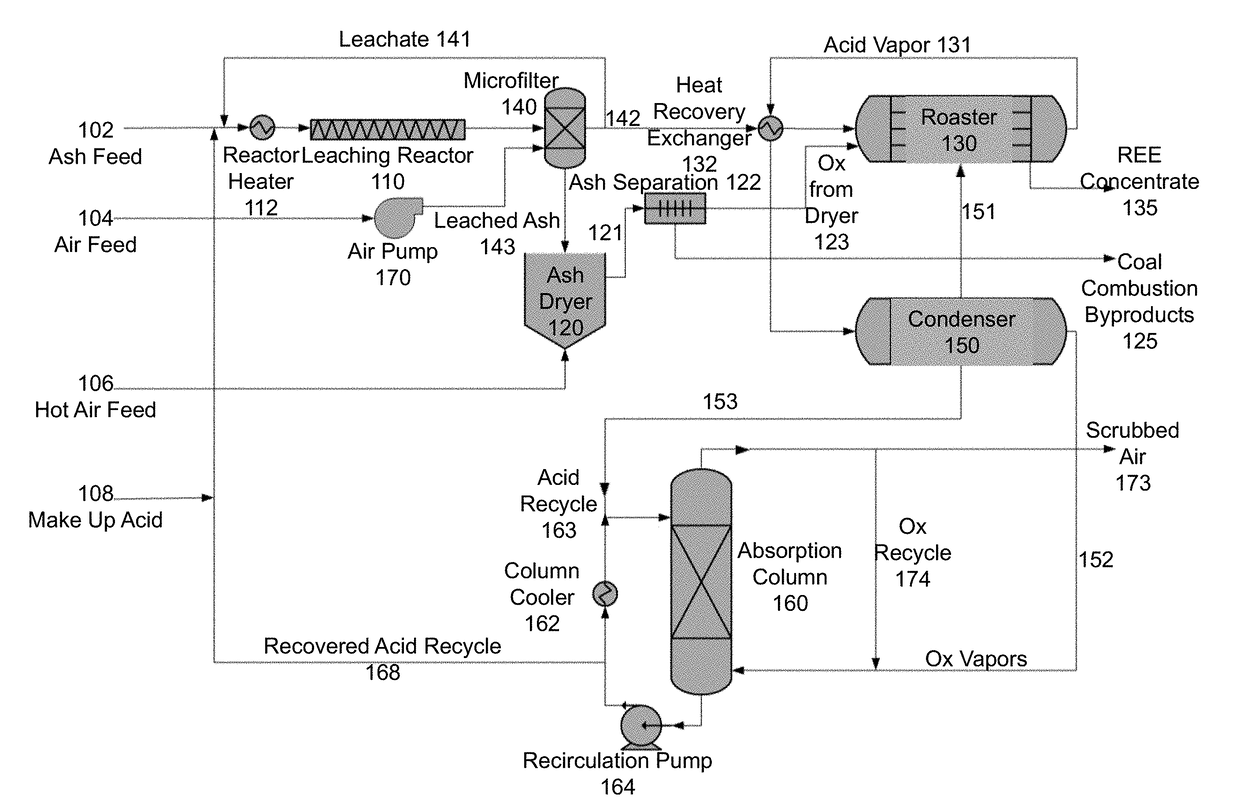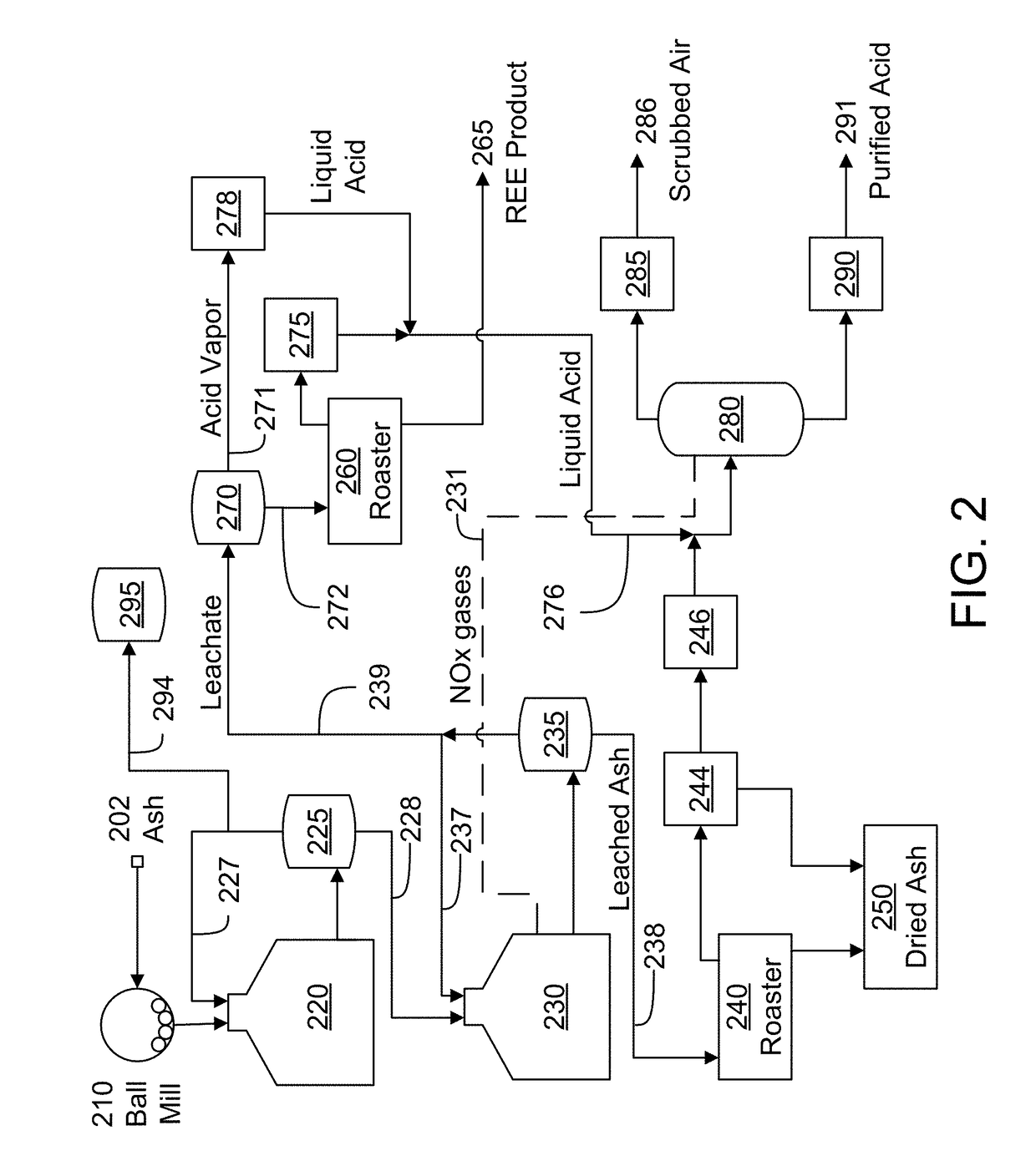Acid digestion processes for recovery of rare earth elements from coal and coal byproducts
- Summary
- Abstract
- Description
- Claims
- Application Information
AI Technical Summary
Benefits of technology
Problems solved by technology
Method used
Image
Examples
example 1
[0082]In feasibility studies using the method of FIG. 1, 10 grams of coal ash in 255 mL of dilute acid produced roughly 0.6 grams of roasted product.
example 2
[0083]Key rare earth elements (REEs) include scandium (Sc), vanadium (V), neodymium (Nd), yttrium (Y), dysprosium (Dy), terbium (Tb), and praseodymium (Pr). Scandium is primarily used as an alloying compound with aluminum to make high performance, lightweight alloys. Vanadium is used largely as an alloying compound to strengthen steel, but is also useful as a catalyst.
[0084]Tests were performed using a starting fly ash having the following concentrations:
ElementsConcentration (ppm)REE + Y + Sc545 ± 13.4Sc36 ± 1.4V279 ± 12 Y104 ± 5.3 Co44 ± 2.5Li~166
[0085]Tests were performed at multiple nitric acid concentrations: 17%, 34%, 51%, and 68% (w / w). The tests were performed on unmilled fly ash with particle size of about 10 microns to about 100 microns, although one test was done with milled fly ash having a particle size of about 1 micron to about 40 microns. The results are shown in the following table. They indicate reduced leaching efficiency at higher acid concentrations, which is l...
example 3
[0095]A bio-based coal liquefaction process according to FIG. 5 was applied to coal. The process dissolves coal in a biosolvent, which prevents the ash from experiencing high temperature oxidizing environments. After digestion of the coal, the resulting oil is centrifuged to remove ash and heavy carbon deposits, and the residual material was then analyzed.
[0096]The residual material was separated into two density cuts (high and low) by sink / float in deionized water. The residual material was also separated into four particle size cuts to determine whether a simple mechanical separation could cause meaningful concentration of the sample. FIG. 6 shows the concentration of REE through the processing of the coal liquefaction ash. FIG. 7 indicates the ratio of heavy REE to light REE in each cut, which also provides some information on changes in the ratio through the liquefaction process.
[0097]Referring to FIG. 6, it appears that the coal liquefaction process enriches REE over the feed c...
PUM
| Property | Measurement | Unit |
|---|---|---|
| Temperature | aaaaa | aaaaa |
| Temperature | aaaaa | aaaaa |
| Temperature | aaaaa | aaaaa |
Abstract
Description
Claims
Application Information
 Login to View More
Login to View More - R&D
- Intellectual Property
- Life Sciences
- Materials
- Tech Scout
- Unparalleled Data Quality
- Higher Quality Content
- 60% Fewer Hallucinations
Browse by: Latest US Patents, China's latest patents, Technical Efficacy Thesaurus, Application Domain, Technology Topic, Popular Technical Reports.
© 2025 PatSnap. All rights reserved.Legal|Privacy policy|Modern Slavery Act Transparency Statement|Sitemap|About US| Contact US: help@patsnap.com



